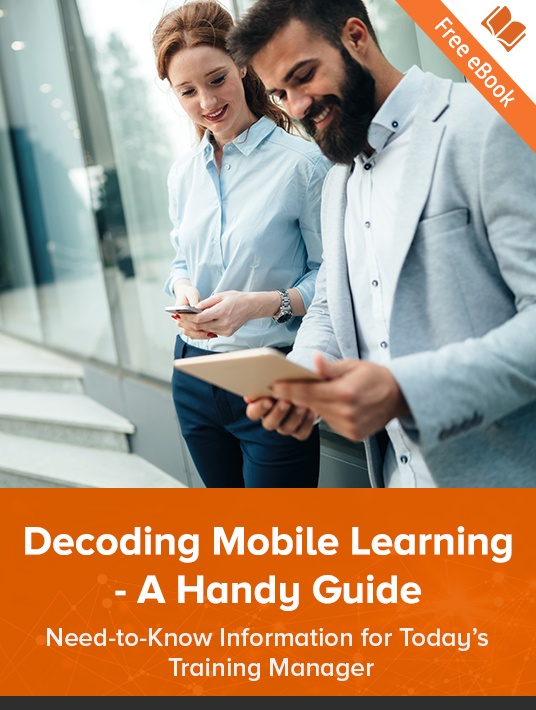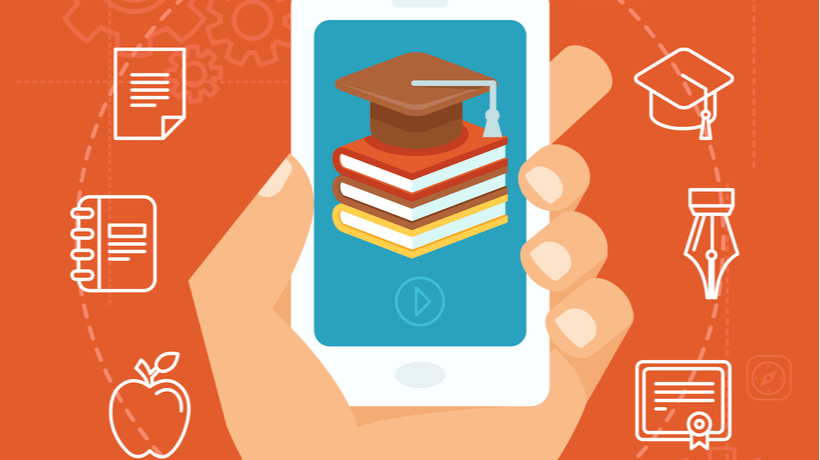Corporate Mobile Learning: Deliver Kickass Corporate Training Solutions With mLearning
Workplaces in the past were rigid and formal, and so was the employee training strategy. Over the years, workplaces have changed so much, and this has led to significant changes in workplace Learning and Development. There is an increasing need to unlearn formal training methods and adapt to a more agile approach to train employees.

With the introduction of technology-enabled training, mobile learning has become a popular strategy for informal training. It has also become a ubiquitous part of blended learning. It’s not uncommon to see the young workforce tapping away on mobiles, catching up with learning, on the go. Mobile learning is the ideal approach for content that needs to be reviewed regularly. It is also handy when it comes to accessing knowledge just-in-time.
Let’s take a look at 4 different types of corporate mobile learning.
1. New Hire Onboarding
Acclimatizing new hires with the organizational culture is an essential step in the onboarding process. This can be done effectively through mobile learning. Technology-enabled learning is useful for effective millennial onboarding. An overview of the organization structure or video messages from the leadership team can be delivered as mobile learning modules.
A mobile learning solution can be used in the pre-boarding process for new hires. Use mobile learning to let new hires know what is expected of them on their first day at work. Help them find their way in the organization, let them know if they are required to complete any paperwork before they begin the onboarding training. If laptops or workstations are going to be assigned to new hires on their first day at work, let them know the point of contact in the IT department.
Apart from getting new hires ready for their first day at work, mobile learning can be used to onboard remote workers; it can also become part of a blended learning program for onboarding. In short, mobile learning can help an organization create the best impression on new hires.
2. Sales Training
The sales teams in most organizations are constantly on the move. They do not have the time to attend face-to-face training and certainly appreciate training that helps them in their moment of need. An mLearning program can take care of getting all the members of your sales team on the same page, irrespective of location. When a salesperson has instant access to information, he is able to handle client queries efficiently.
Mobile learning tends to be short, to the point, and is delivered in bite-sized nuggets that make it easier for sales reps who have very little time to go through training content. Research has proved that without ongoing learning and reinforcement, most of the information learned during training is lost. A mobile learning strategy can be employed for training reinforcement. Simple, easy to use mobile learning can make sales training enjoyable.
3. Product Training
Whether it is listing a product’s features, demonstrating a product operation, or comparing with a competitor’s product, product training can be rolled out on mobile devices. Mobile learning can be used to deliver product training to a global workforce, in engaging formats that are easy to understand and apply.
One of our clients, a pharmaceutical giant, wanted an online product training program for its Sales reps. They wanted to supplement classroom training programs with refresher courses in the form of mobile learning. This would enable Sales reps to take the training anytime, anywhere.
We used Articulate Storyline to develop mobile device-compatible courses that could be accessed by sales reps to reinforce classroom training. We developed over 50 modules as an eLearning curriculum targeting learners at different levels. The online training also acted as a ready ‘reckoner’ that Sales reps could use to refer a product’s features.
4. Compliance Training
Compliance training is not something that employees look forward to because the content can be quite boring. But that doesn’t mean compliance training can be ignored. Moreover, when you make training mandatory, it is immediately met with some resistance. Compliance training delivered as mobile learning can make the training engaging. For an effective mobile learning experience, courses cannot be lengthy, they have to be concise. Let’s say you already have a 1-hour compliance training program in place. You can repurpose the existing training by breaking it down into smaller modules of 10 minutes each and deliver it as a mobile learning course. This is also a way to ensure that your mobile workforce stays compliant with mandatory training requirements.
Mobile learning can be used to deliver a variety of training programs that are commonly required by organizations. It’s up to you, as training managers, to decide on the type of training programs that need to be delivered through a mobile learning strategy.
If you want to learn more about the potential of mobile learning, download the eBook Decoding Mobile Learning - A Handy Guide.










